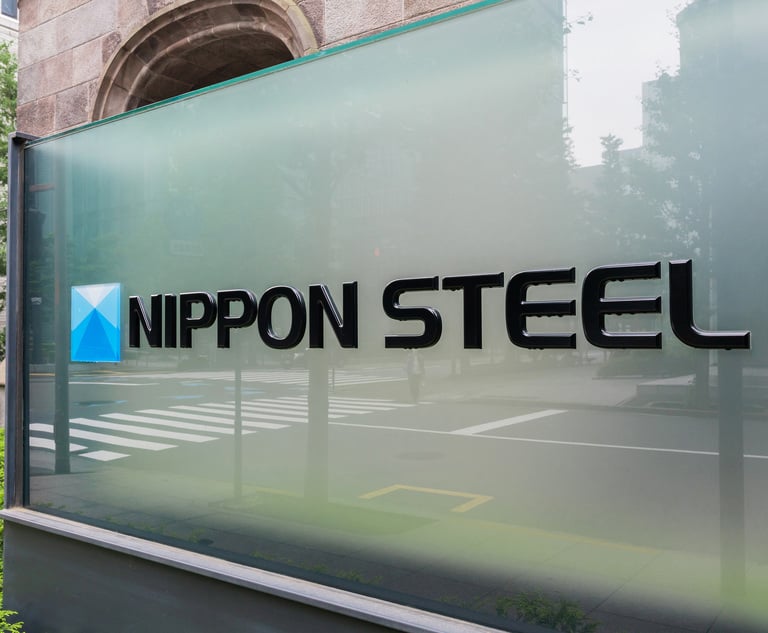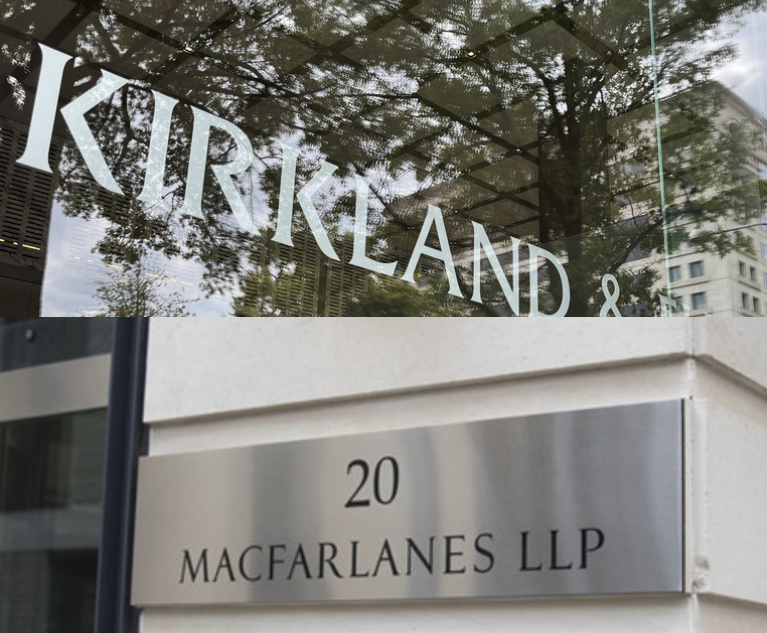Change of image for 'grim reapers'
Insolvency - The role of the insolvency practitioner has evolved from pure liquidation to finding ways of keeping businesses afloat.
February 03, 1999 at 07:03 PM
4 minute read
The Society of Practitioners of Insolvency (SPI) is taking its first steps towards recognising the broadening role of the insolvency practitioner. On 22 January, it voted to proceed with the proposal to create a new organisation which will represent the whole of the insolvency and restructuring industry, from traditional insolvency practitioners through to workout and 'turnaround' professionals.
Even the SPI's journal, Insolvency Practitioner, is to be renamed Recovery this month.
"We perceive this as the way the market is going," says Stephen Gale, head of insolvency at Herbert Smith and the SPI's vice president from next April. "There is a clear need for both groups of professionals to work together."
Current chairman, Murdoch McKillop of Arthur Andersen explains the rationale. "The trend is to try to find ways of resolving things informally. Many insolvency professionals are very skilled at corporate recovery and workout, but the problem the profession has is that they are perceived as being the undertakers coming along to measure up the coffin," he says.
"I see the whole area as a spectrum. At one end, you have pure liquidation, then receiverships and administrations through to workout and 'turn around', then business improvement for under-performing companies. Where we draw the line is where there is a real threat, say within 12 months, of that business being in trouble. The rest we can leave to the management consultants."
McKillop is keen to emphasise that the SPI's aim is to create a new and separate organisation rather than simply broaden its franchise and the SPI will continue to function as a distinct entity. "It is important for us all that the focus on pure insolvency is not dropped," McKillop explains. "That is what is so interesting about Southeast Asia – the informal process does not work unless there is a robust formal insolvency business. If you don't have the stick of the formal process, all you get is stand-off and stagnation.
"Equally, there are a number of people in the
business recovery sector who quite deliberately are not insolvency practitioners and don't want to be closely associated. This is the challenge we are still working on – trying to find the right balance."
Gale's challenge is to persuade SPI members that the new organisation is the way forward. Although the initial proposal to take the process further gained the required 75% of votes the week before last, Gale stresses that it is still early days. "We now have the job of adding the detail to the concept, explaining the detail to the membership and getting the correct response. Most people are supportive of this in broad principle and I would hope that we
can persuade the necessary 75% of members.
We have devoted a huge amount of time to this proposal.
"If we don't proceed, a separate turnaround group will be established which many of our members will need to join. The traditional tool was the insolvency appointment. Now this is only used in extremis. Practitioners have a range of tools now – it is a slightly different market."
McKillop sees the move as one more stage in a process that has been developing since the 1960s. "It has been an evolutionary course which has been refined over time. First it was receiverships, then administrations were introduced in 1986. In the 1990s, it was realised that we can apply some of these techniques, but not necessarily in a formal process," he says.
"I like to think of people in this business now as being like company vets – they try to save the animal, but if it can't be saved, then at least make sure it is put down humanely."
This content has been archived. It is available through our partners, LexisNexis® and Bloomberg Law.
To view this content, please continue to their sites.
Not a Lexis Subscriber?
Subscribe Now
Not a Bloomberg Law Subscriber?
Subscribe Now
NOT FOR REPRINT
© 2025 ALM Global, LLC, All Rights Reserved. Request academic re-use from www.copyright.com. All other uses, submit a request to [email protected]. For more information visit Asset & Logo Licensing.
You Might Like
View All
Milbank, Wachtell, Ropes and Pittsburgh Duo Aim to Save Nippon Steel's US Steel Merger


Kirkland, Macfarlanes Act as Evelyn Partners Offloads £700M Professional Services Arm
2 minute readTrending Stories
Who Got The Work
Michael G. Bongiorno, Andrew Scott Dulberg and Elizabeth E. Driscoll from Wilmer Cutler Pickering Hale and Dorr have stepped in to represent Symbotic Inc., an A.I.-enabled technology platform that focuses on increasing supply chain efficiency, and other defendants in a pending shareholder derivative lawsuit. The case, filed Oct. 2 in Massachusetts District Court by the Brown Law Firm on behalf of Stephen Austen, accuses certain officers and directors of misleading investors in regard to Symbotic's potential for margin growth by failing to disclose that the company was not equipped to timely deploy its systems or manage expenses through project delays. The case, assigned to U.S. District Judge Nathaniel M. Gorton, is 1:24-cv-12522, Austen v. Cohen et al.
Who Got The Work
Edmund Polubinski and Marie Killmond of Davis Polk & Wardwell have entered appearances for data platform software development company MongoDB and other defendants in a pending shareholder derivative lawsuit. The action, filed Oct. 7 in New York Southern District Court by the Brown Law Firm, accuses the company's directors and/or officers of falsely expressing confidence in the company’s restructuring of its sales incentive plan and downplaying the severity of decreases in its upfront commitments. The case is 1:24-cv-07594, Roy v. Ittycheria et al.
Who Got The Work
Amy O. Bruchs and Kurt F. Ellison of Michael Best & Friedrich have entered appearances for Epic Systems Corp. in a pending employment discrimination lawsuit. The suit was filed Sept. 7 in Wisconsin Western District Court by Levine Eisberner LLC and Siri & Glimstad on behalf of a project manager who claims that he was wrongfully terminated after applying for a religious exemption to the defendant's COVID-19 vaccine mandate. The case, assigned to U.S. Magistrate Judge Anita Marie Boor, is 3:24-cv-00630, Secker, Nathan v. Epic Systems Corporation.
Who Got The Work
David X. Sullivan, Thomas J. Finn and Gregory A. Hall from McCarter & English have entered appearances for Sunrun Installation Services in a pending civil rights lawsuit. The complaint was filed Sept. 4 in Connecticut District Court by attorney Robert M. Berke on behalf of former employee George Edward Steins, who was arrested and charged with employing an unregistered home improvement salesperson. The complaint alleges that had Sunrun informed the Connecticut Department of Consumer Protection that the plaintiff's employment had ended in 2017 and that he no longer held Sunrun's home improvement contractor license, he would not have been hit with charges, which were dismissed in May 2024. The case, assigned to U.S. District Judge Jeffrey A. Meyer, is 3:24-cv-01423, Steins v. Sunrun, Inc. et al.
Who Got The Work
Greenberg Traurig shareholder Joshua L. Raskin has entered an appearance for boohoo.com UK Ltd. in a pending patent infringement lawsuit. The suit, filed Sept. 3 in Texas Eastern District Court by Rozier Hardt McDonough on behalf of Alto Dynamics, asserts five patents related to an online shopping platform. The case, assigned to U.S. District Judge Rodney Gilstrap, is 2:24-cv-00719, Alto Dynamics, LLC v. boohoo.com UK Limited.
Featured Firms
Law Offices of Gary Martin Hays & Associates, P.C.
(470) 294-1674
Law Offices of Mark E. Salomone
(857) 444-6468
Smith & Hassler
(713) 739-1250







